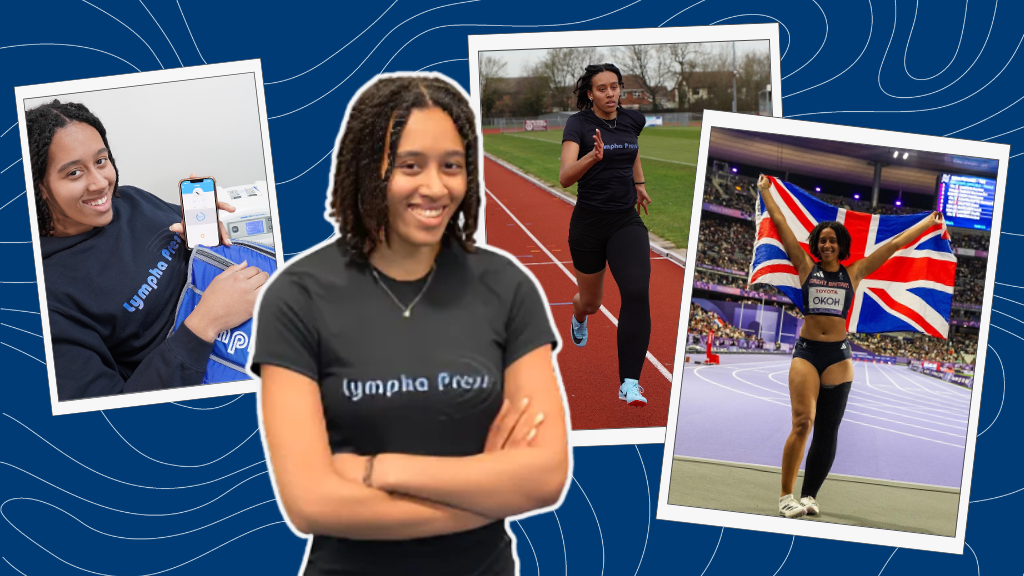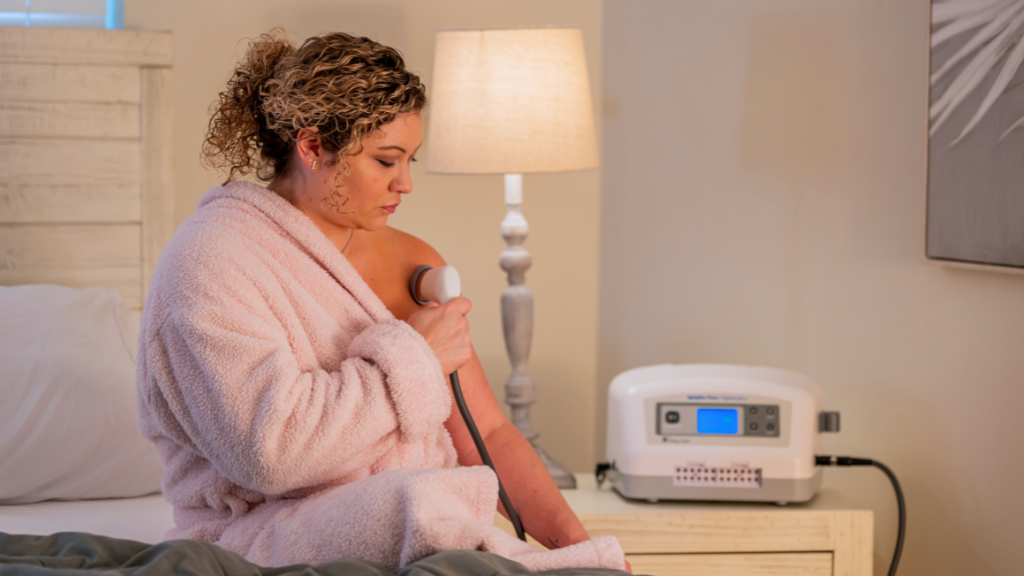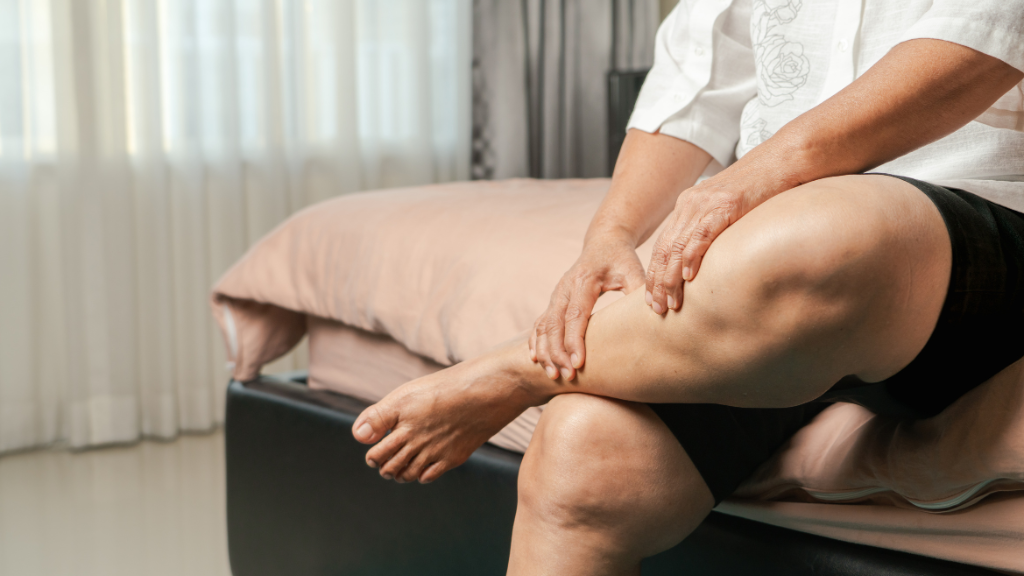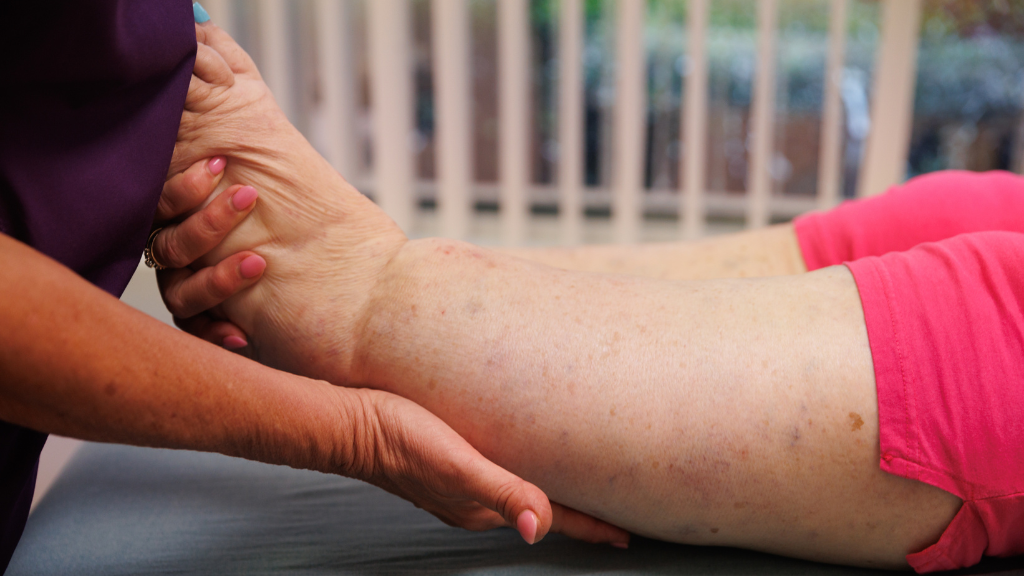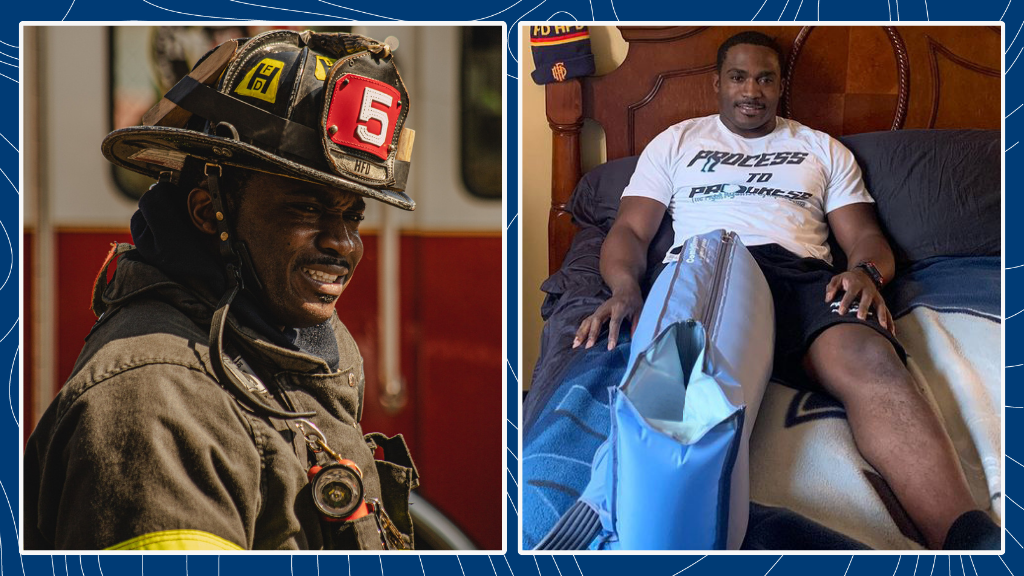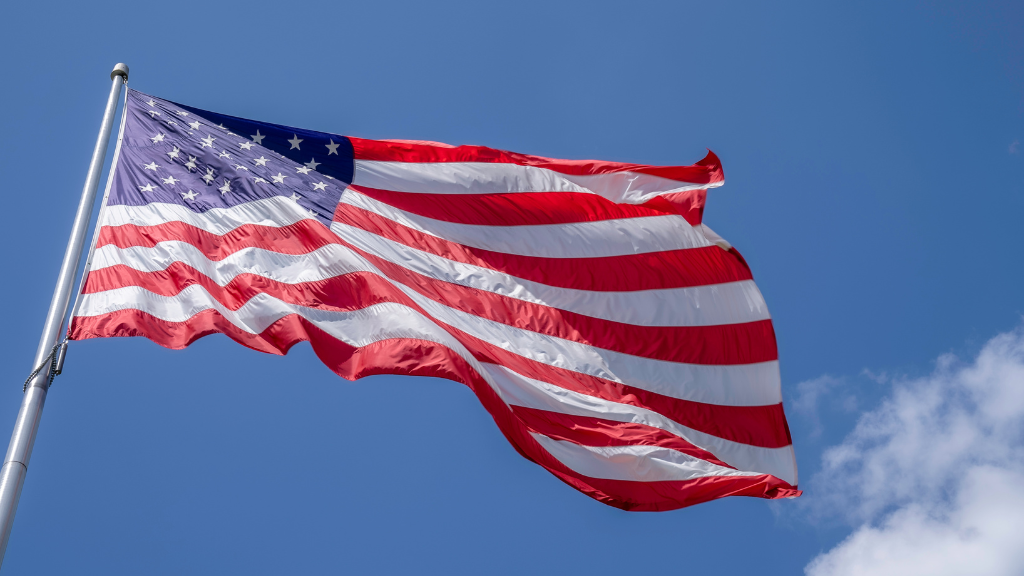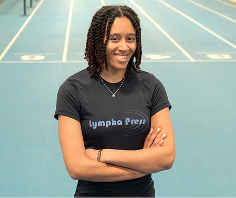
Didi Okoh’s early life revolved around athletics. Throughout childhood, she competed in many track and field events at the national level in the United Kingdom, winning individual and team medals. But when she began to develop lymphedema symptoms just before her teen years, her dream of competing in the Olympics took a sharp turn.
With incredible perseverance, Okoh, now 22, achieved a new dream and continues blazing trails for athletes with lymphedema.
Lymphedema Symptoms Began
At 12 years old, Okoh was a top-tier competitor attending an event for gifted young athletes. “A girl there said to me, ‘One of your legs is bigger than the other,’” she remembers. She looked down and realized her left thigh was very slightly larger than the right, but she might not have even noticed it if someone hadn’t pointed it out.
Back at home, Okoh spoke to her mother and coaches, who believed it was actually her right leg that was the problem. They thought her left leg—her dominant leg—was larger because it was more muscular, and she needed to build up strength in her right leg. So, she spent the next eight months strengthening her right leg.
The Swelling Gets Worse
Okoh continued training and competing, and on one occasion, competed in two strenuous events on the same day. The following morning, she realized something was very wrong. “The day after the competitions, I woke up, and my left leg was on fire,” she says. “I was in so much pain.” Her left thigh was also covered in rashes.
Okoh’s coaches thought she had a muscular injury, so she took a month off training. But the break provided no relief. Her healthcare provider prescribed a common children’s pain reliever and told her the swelling would go down—but it didn’t. “After that, we started thinking it was time to get a specialist’s opinion because the swelling was only getting worse,” she says.
Receiving a Lymphedema Diagnosis
Okoh received a referral to a children’s hospital. “They said I had some sort of lymphatic issue, but they didn’t know what was wrong,” she says.
After a referral to a different hospital, Okoh finally received a lymphedema diagnosis at age 16. “It took almost four years to figure out what was going on,” she says.
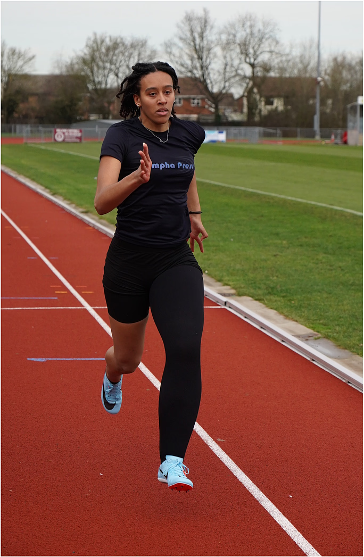
Infections and Impairment
Okoh had been poised for selection by Great Britain’s national track and field team for the high jump and the 800-meter race. When the swelling began, it wasn’t bad enough to keep her from running and jumping. But that changed as her lymphedema symptoms grew worse.
“I went from being a national medalist to not being able to complete races,” she says. She started getting infections in her left leg, and each infection seemed to damage her leg more. “At first, we didn’t know what was causing the infections. It wasn’t until I was about 15 that I got put on a long-term antibiotic, but by then, I’d already had four serious infections.”
From Top Competitor to Struggling to Finish
Okoh’s leg became so swollen and impaired she struggled to finish 200-meter races. She would reach the finish line and collapse because of the strain on her body.
“I could feel that the muscles in my left leg just weren’t activating like they used to,” she says. “It wasn’t just that the leg was swollen and heavier with fluid. If that were the case, I could have strengthened it to compensate.”
The heartbreak continued when coaches began dropping her. “They didn’t want to coach me anymore because they were worried that I was going to get injured,” says Okoh. She tried training for throwing events, but throwing wasn’t her strength or interest. “It was very hard because athletics was where I thrived and where I felt like I belonged.”
Difficult Years and Fading Dreams
Okoh had always made her friends through sports, but lymphedema forced her to the fringes of the athletics she’d always loved. “I had about three years when I felt very isolated,” she says.
During that time, Okoh understood that her dream of making the Olympic team was no longer realistic. “I hadn’t even given the Paralympics a thought yet,” she says. At a track and field meet, another athlete noticed Okoh’s swollen leg and encouraged her to look into receiving classification for Para athletics.
A New Path: Para Athletics With Lymphedema
Okoh realized the Paralympics could give her a fresh start. She searched for other competitive athletes with lymphedema and didn’t find any but decided to proceed with the process.
Okoh applied for Para classification, where evaluators place athletes into different categories depending on the type and severity of physical impairment. Unfortunately, Para officials weren’t familiar with lymphedema, and she received the incorrect classification. She went through several frustrating rounds of appeals and re-evaluation before she finally received the correct category, T42, for athletes with whole-leg impairment.
The First Paralympic Athlete With Lymphedema
To Okoh’s surprise, she was selected for the 2024 Paris Paralympics after only one year of training for the 100-meter race. As far as she knew, she would be the first Paralympian with lymphedema. She was also the only Great Britain athlete on the 2024 Paralympic team who’d never been selected for an international competition before.
Okoh says she had two goals when race day came: “Do not come in last, and do not come in fourth.” At the end of a dramatic 100-meter final where two other competitors tripped and fell, she looked up to find her name on the medal board. She’d captured bronze.

Medal Winner and Lymphedema Advocate
After medaling in Paris, Okoh began preparing for the 2025 international and world Para competitions. Her Lympha Press device is a critical part of her training, especially during cold weather, and she uses it as much as possible.
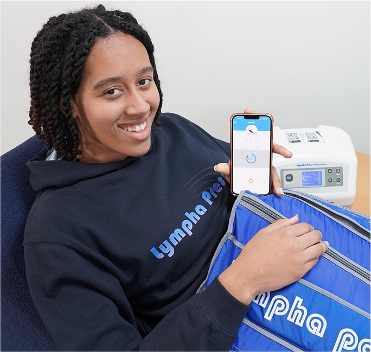
Compression Therapy UK Ltd, distributors of Lympha Press in the United Kingdom and Ireland, sponsors her. They gifted her the pump and garments, and continue to provide support. Okoh now has garments for both legs, so she often includes her right leg in her pumping sessions, which she finds very relaxing.
Okoh also makes time to advocate for the lymphedema community. “When I was younger and struggling, I didn’t know anyone with lymphedema. Having someone out there like me would have helped me a lot,” she says. “I learned that if there’s something you want to achieve, you can’t let other people’s perceptions dictate what you do. You have to live for yourself, not for other people.”
Okoh encourages others to reach out to her on her Instagram and TikTok. She especially enjoys connecting online and in person with young people and athletes with lymphedema.
Discover how Lympha Press pneumatic compression devices support all populations living with lymphedema, including athletes, by reducing swelling and enhancing recovery.
Photos provided by Didi Okoh.
